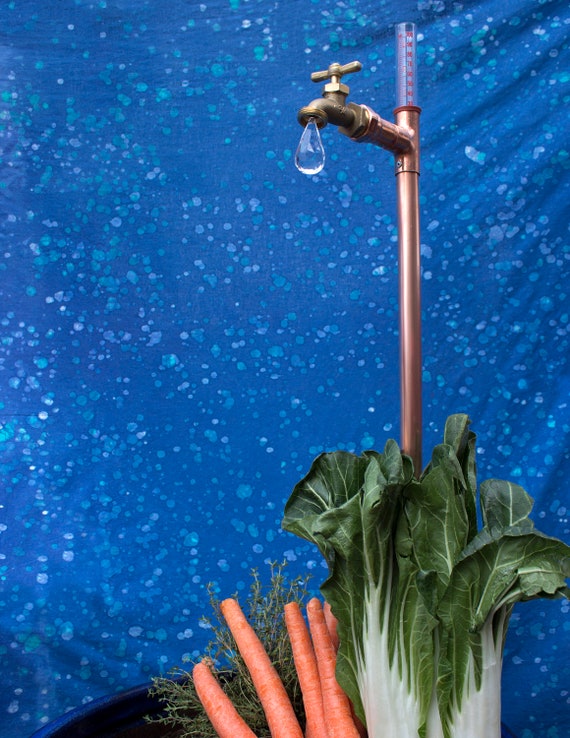Do It Yourself Rain Scale: Straightforward Actions to Make Your Own
Are you interested in tracking rainfall in your location? Developing your very own DIY rain scale is a easy and efficient way to gauge and videotape precipitation. With simply a couple of common products and some basic steps, you can conveniently construct your very own rainfall gauge in your home. In this overview, we will offer you with a step-by-step procedure to assist you create your very own rain gauge. No need for any specialized expertise or devices - this job can be completed by anyone. By following these straightforward instructions, you will certainly have a reliable device to gauge rainfall and add to your understanding of the local climate patterns. Let's obtain begun on making your DIY rain scale today!
Gather Materials
To start constructing your do it yourself rainfall scale, gather all the required materials using a detailed listing of items. Having the right products on hand will guarantee the successful production of your rainfall scale and permit for accurate dimensions of rains. To start with, you will require a clear plastic container or cylinder, such as a plastic container or container. Make sure the container is transparent to ensure that you can conveniently see the water degree inside. Next off, you will certainly need a leader or gauging tape to mark the increments on the container. This will certainly enable you to measure the amount of rainfall properly. In addition, you will require a long-term marker or water-proof tape to mark the measurements on the container. This will guarantee that the markings stay noticeable also when exposed to rainfall. Ultimately, you will require a tough base or stake to firmly hold your rain scale in location. This can be a wood or metal stake that can be inserted right into the ground or a durable level surface to supply stability. Collecting these materials in advance will improve the building process and ensure that you have whatever you need to produce your very own do it yourself rain gauge.
Prepare the Container

Mark the Dimension Increments
To properly determine the amount of rains, accurately marking the dimension increments on your DIY rain gauge is important. Without clear and exact markings, it would be hard to establish the exact quantity of rainfall collected in your rain scale. Here are the steps to mark the measurement increments on your rain gauge.
The most common systems for gauging rainfall are inches and millimeters. When you have selected the unit, make use of a long-term marker or waterproof paint to mark the increments on the side of your rainfall gauge.
When noting the increments, it is necessary to make certain that they are uniformly spaced and plainly noticeable. Use a leader or measuring tape to guarantee accuracy and uniformity. Furthermore, ensure that the markings are immune to fading or abrading, as direct exposure to the components may trigger them to wear away gradually.
Area the Rainfall Scale Outdoors
The rainfall gauge must be put outdoors to precisely gather rainfall information. The area selected for the rain scale must be complimentary and open from any type of obstructions that can potentially impact the dimension of rainfall. The Rain Gauge.
Additionally, it is important to place the rain scale on a stable surface, such as a degree ground or a durable message. This will avoid any type of motion or tilting of the scale, which could cause unreliable measurements. It is also recommended to prevent putting the gauge near any type of sources of fabricated water, such as sprinklers or drain systems, as this can conflict with the accuracy of the measurements.
Monitor and Document Rainfall Information
Normal surveillance and recording of rainfall data is crucial for exact information evaluation and interpretation. By tracking rains dimensions, you can acquire useful insights into weather patterns, environment fads, and water resource monitoring. To effectively keep an eye on and tape-record rainfall information, it is very important to establish a routine and preserve regular practices.
Firstly, guarantee look here that your rainfall gauge is positioned go to these guys in an open location away from obstacles such as trees or buildings that might obstruct rains. In addition, see to it the rain gauge is degree and securely secured to prevent any motion that could affect the accuracy of the measurements.

When tape-recording the rainfall data, it is vital to note the date and time of each measurement. Make use of a leader or a gauging adhere to establish the rainfall depth in the rainfall gauge, and record this info accurately.
To ensure the accuracy of the measurements, it is suggested to empty the rainfall scale after each recording. This will certainly prevent any overflow or dissipation from affecting succeeding measurements.
Verdict
In conclusion, developing a DIY rainfall gauge is a sensible and straightforward way to check and record rainfall data (The Rain Gauge). By complying with the steps laid out in this short article, you can quickly collect materials, prepare the container, mark the measurement increments, and put the rainfall scale outdoors. On a regular basis monitoring and tape-recording rainfall data can give beneficial details for various purposes
Having the ideal materials on hand will certainly ensure the successful creation of your rain scale and enable for precise measurements of rains.To properly determine the quantity of rains, properly noting the measurement increments on your DIY rain scale is crucial.The rainfall gauge need to be positioned outdoors to precisely gather rainfall information. The area selected click to investigate for the rainfall scale should be open and totally free from any blockages that could possibly impact the dimension of rainfall.In final thought, creating a DIY rain gauge is a functional and simple method to keep an eye on and videotape rainfall information.